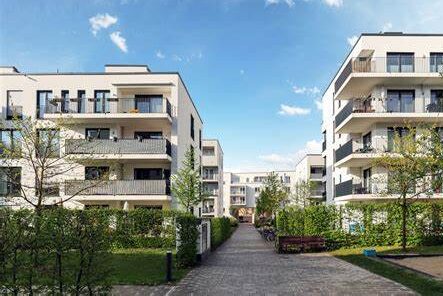In recent years, affordable residential housing has become a critical issue, attracting attention from governments, real estate developers, and residents across the globe. As housing prices continue to climb, the demand for affordable housing options has become increasingly urgent. This article explores the current state of affordable residential housing, factors affecting housing costs, initiatives aimed at expanding affordable housing, and strategies for individuals seeking cost-effective housing options.
Understanding Affordable Residential Housing
What is Affordable Residential Housing?
Affordable residential housing refers to housing options that cost a manageable portion of household income, typically defined as no more than 30% of a household’s gross income. When people spend more than this threshold on housing, they are considered “cost-burdened,” meaning they have less money available for other essentials like food, healthcare, and education.
Affordable housing is essential for families, young professionals, and low-to-middle-income individuals who struggle to find affordable, high-quality places to live in urban and suburban areas. Addressing affordable housing needs is a critical step toward building stronger, more inclusive communities.
Current Trends in Affordable Residential Housing
With the growing demand for affordable housing, governments, developers, and community organizations have been exploring solutions to bridge the gap. Below are some notable trends and solutions currently shaping the affordable housing sector:
Increased Focus on Multi-Family Housing Developments
To maximize space and serve more people, many cities are shifting their focus to multi-family housing developments. These buildings, which can include apartments and condominiums, offer housing to multiple households within a single structure, enabling a more efficient and cost-effective housing solution. Multi-family developments are particularly common in densely populated urban areas, where land availability is limited.
Government-Backed Subsidized Housing Programs
Subsidized housing programs have been expanded in recent years to address rising housing costs. In the United States, for instance, programs such as the Low-Income Housing Tax Credit (LIHTC) encourage private developers to invest in affordable housing projects. Similarly, the Section 8 Housing Choice Voucher Program provides rental assistance for low-income families, allowing them to find housing in the private market.
Innovative Housing Solutions
Developers and non-profits are turning to innovative housing solutions to address affordability, including modular housing, tiny homes, and adaptive reuse of existing structures. Modular housing, for example, can be produced at lower costs than traditional construction, making it a popular choice for affordable housing projects.
Increased Use of Public-Private Partnerships (PPP)
Public-private partnerships are becoming more common in affordable housing projects. Through these partnerships, governments work with private developers to create affordable housing by providing tax incentives, funding, and land. PPPs can offer significant benefits for both developers and communities, including reduced costs and streamlined project timelines.
Key Factors Affecting Affordable Residential Housing
Several factors influence the cost and availability of affordable residential housing. By understanding these factors, policymakers, developers, and individuals can make more informed decisions about addressing housing needs.
Land Availability and Cost
The cost of land is one of the primary factors influencing housing affordability. In areas where land is scarce or expensive, such as in large metropolitan cities, the price of housing tends to be higher. Efforts to increase land availability, such as rezoning and land-use policy changes, can help reduce costs.
Construction Costs
The cost of construction materials and labor has a direct impact on housing prices. Due to supply chain disruptions and increased demand, construction costs have been rising globally, making it more expensive to build affordable housing. In response, some developers are turning to cost-effective building methods, such as modular construction, to reduce expenses.
Interest Rates and Financing
Interest rates significantly affect the affordability of residential housing. When interest rates are low, financing costs decrease, making it more affordable for developers to build housing and for individuals to purchase homes. Recent shifts in interest rates, driven by economic conditions and policies, have affected the financing landscape for affordable housing.
Government Policies and Regulations
Government policies and regulations play a crucial role in the availability and affordability of housing. Zoning laws, rent control regulations, and property taxes all influence the cost and accessibility of residential housing. For example, zoning policies that allow for higher-density housing can increase the supply of affordable housing options in urban areas.
Population Growth and Migration Patterns
Population growth and migration patterns are critical factors affecting housing demand. Rapidly growing cities face higher housing demands, which can drive up prices if supply doesn’t keep pace. Similarly, urban migration patterns are influencing housing markets, as people move from rural to urban areas in search of employment and better amenities.
Comparing Affordable Housing Costs Across Regions
To provide a snapshot of affordable housing costs across different regions, here is a table that outlines average rental prices for affordable housing in select U.S. cities, as of 2024:
| City | Average Affordable Rent for 1-Bedroom | Average Affordable Rent for 2-Bedroom | Government Assistance Availability |
|---|---|---|---|
| New York City | $1,200 | $1,800 | Yes |
| Los Angeles | $1,000 | $1,600 | Yes |
| Chicago | $900 | $1,400 | Yes |
| Atlanta | $800 | $1,200 | Limited |
| Dallas | $700 | $1,100 | Yes |
| Miami | $1,000 | $1,500 | Limited |
| Seattle | $1,100 | $1,700 | Yes |
| Houston | $750 | $1,150 | Yes |
Data sources: National Low Income Housing Coalition (NLIHC), Affordable Housing Online, 2024
Future Prospects for Affordable Residential Housing
The future of affordable residential housing depends on the continuation of supportive policies, innovative building techniques, and collaborative efforts from various stakeholders. Here are some trends and predictions for the future of affordable housing:
Increased Investment in Affordable Housing Projects
With affordable housing increasingly recognized as a national priority, governments are expected to allocate more funds toward affordable housing projects. This investment could lead to the development of new affordable housing units in high-demand areas.
Expansion of Inclusionary Zoning Policies
Inclusionary zoning policies, which require a portion of new developments to be set aside as affordable units, are anticipated to expand in more cities. This approach ensures that affordable housing is integrated into communities, promoting inclusivity and diversity.
Sustainable and Eco-Friendly Building Practices
The shift toward sustainable building practices is likely to continue, especially as climate concerns grow. Green building techniques, energy-efficient materials, and eco-friendly practices can reduce long-term costs and make affordable housing more attractive and accessible.
Enhanced Focus on Rural Affordable Housing
While much of the attention has been on urban affordable housing, rural areas also face housing affordability challenges. Future initiatives may focus on expanding affordable housing options in rural communities, where access to amenities and employment opportunities can be limited.
Strategies for Finding Affordable Residential Housing
If you’re in the market for affordable residential housing, here are some strategies that can help you find budget-friendly options:
Explore Government Housing Assistance Programs
For those who qualify, government assistance programs can be invaluable. Programs such as Section 8 and Public Housing provide rental assistance or access to affordable units. To determine eligibility, contact your local housing authority or visit HUD’s website.
Look Beyond Major City Centers
Affordable housing options are often more available in suburbs or smaller towns. While these areas may require a longer commute, they often offer lower rental costs and more spacious housing options.
Search for Income-Restricted Housing
Many cities have income-restricted housing options for individuals and families who earn below a certain income level. These units are often located within multi-family complexes and may require proof of income.
Consider Roommates or Co-Living Options
Sharing a rental unit with roommates or exploring co-living arrangements can significantly reduce housing costs. Co-living spaces are especially popular in high-demand urban areas, providing budget-friendly options along with shared amenities.
Negotiate Rental Terms with Landlords
Negotiating rental terms, such as signing a longer lease or agreeing to minor maintenance responsibilities, can sometimes result in lower monthly rent. If you find a unit that fits your budget, discuss potential discounts or favorable terms with the landlord.
Conclusion
The affordable residential housing market is an essential component of the housing sector, especially as costs continue to rise in urban and suburban areas. By understanding the factors influencing housing affordability and staying informed about current trends, individuals can make informed decisions about finding and securing affordable housing. Likewise, ongoing investments in affordable housing initiatives and innovative solutions are critical for building sustainable, inclusive communities.
For more information on affordable housing programs and resources, visit the National Low Income Housing Coalition (NLIHC) for the latest updates and data.




